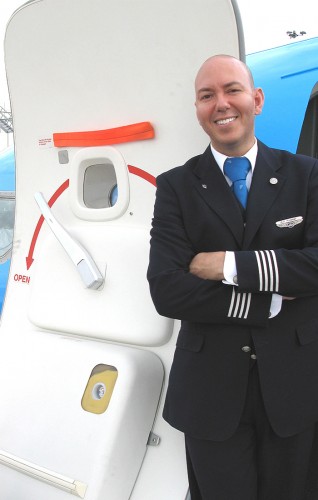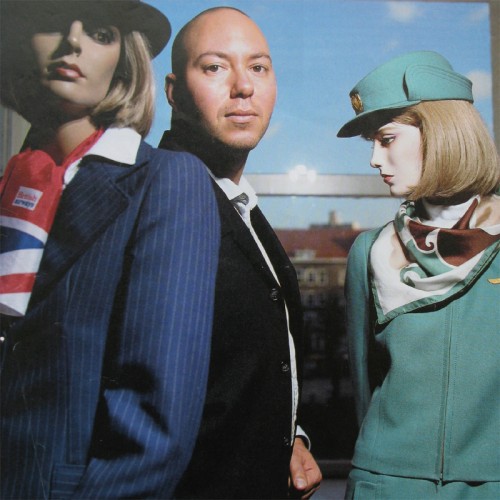This was a treat: for msnbc.com’s Overhead Bin blog, I profiled Cliff Muskiet’s on-line museum of more than 1000 flight attendant uniforms.

The address for his website — uniformfreak.com — says it all.
Cliff Muskiet, an aviation-crazed kid who grew up to be a flight attendant for KLM Royal Dutch Airlines, has amassed a collection of more than 1,000 flight attendant uniforms.

“Only stewardess uniforms,” said Muskiet. “The female uniforms come in various colors, materials and with different accessories like hats, scarves and gloves. Male uniforms all look the same: jacket, pants, plain shirt and a tie, most men’s uniforms are dark blue and quite boring.”
Muskiet got his first few uniforms in the 1970s and 80s. After a 1993 stop in Ghana, where he picked up some old Ghana Airways uniforms, he began collecting in earnest.

“I love the 1970s psychedelic patterns and color combinations: yellow, red, orange, purple, green, white and blue; every color was used and everything was possible,” Muskiet said. “Also flower prints, dots or checked fabrics were used a lot. I love the big pointy collars from the 70s and synthetic fabrics.”
Muskiet keeps his collection of uniforms and accessories in closets, containers, garment bags and suitcases in two rooms of his home in Amsterdam. For display in his online museum, he photographs each uniform on his one mannequin, which is a size 2.
“I have uniforms in a size 2, but also in a size 10 or 14,” he said. “When she has to wear a size 14, I use pins to make the uniform look nice at the front.”
Among his favorites are two KLM uniforms that have sentimental value: a circa 1971 uniform that was the first one given to him and an example of the KLM uniforms worn from 1975 through 1982. “The uniforms remind me of my childhood and the many trips I made to the USA on KLM with my mother,” said Muskiet. Some of his other favorites are the uniforms worn by female flight attendants on Asiana Airlines in the 1990s, on Kuwait Airways and United Airlines from 1968-1971 and the current outfits worn by TAP Portugal and British Caledonian.
“In the late 1960s and 1970s, a lot of different colors were used and that is something I really miss,” he said. “Especially in the USA, flight attendant uniforms have become a bit boring and look like business outfits.”
A tour through Muskiet’s online museum is anything but boring. “From looking at so many uniforms, you can see trends that correlate with the events of the time and learn about the role of the flight attendant throughout history,” said Kathrine Browne, collections assistant at Seattle’s Museum of Flight. Browne helped put together two popular exhibitions featuring flight attendant uniforms — called “Style in the Aisle” — taken from the museum’s 1,500-piece collection. She is unaware of an online collection that can compare with Muskiet’s. “The collection is exceptional.”
Muskiet is always on the lookout for more uniforms and says he enjoys everything about his job as a purser for KLM. “Except the time differences. One week you are in Hong Kong and the next week you are in New York: time difference 13 hours! The older you get, the more difficult it is to deal with this, but it is all worth it.”
Especially if you’re wearing the right, stylish uniform.